Professor Darrell Pepper from the University of Nevada at Las Vegas visited the Wessex Institute during his sabbatical leave to work on advanced computational methods.
Darrell has a long and distinguished academic career, as well as substantial expertise in engineering practice. After completing his undergraduate and post-graduate studies at the University of Missouri in Rolla, he worked in Dupont de Nemours at the Savannah River Laboratory in South Carolina before joining the Marquardt Company in California and becoming the Co-founder and Chief Executive Officer of Advanced Projects Research.
After his industrial career, Darrell joined the University of Nevada at Las Vegas, where in the last two decades he has risen to become the Director of the Nevada Centre for Advanced Computational Methods.
Prof Pepper is the author of nearly 200 technical papers and five books, including some published by WIT. 
His research interests range from computational dynamics and numerical heat transfer, hybrid finite element and high order numerical techniques, parallel processing, compressible flow simulation to atmospheric and environmental modelling and groundwater flow.
Darrell has collaborated in many WIT activities, including the organisation of joint conferences at the University of Nevada on Environmental Problems and Boundary Element methods.
His stay at WIT was, in his words, “a welcome change from the hectic activities and obligations at UNLV”. The visit allowed him to think and to contemplate several research initiatives that he had begun while at UNLV, and to devote uninterrupted time to work on new algorithms. In addition, he was invited to the International Workshop on Energy, Combustion, and the Environment at IIT Kanpur, and was able to develop a set of talks related to the research he had undertaken at WIT. His visit also allowed him to renew his efforts in utilizing meshless methods, as well as BEM techniques, and to talk with real experts in numerical methodology. The advice and interactions with Prof Carlos Brebbia and members of the WIT staff allowed him to reexamine basic concepts and review the wide range of applications of these unique numerical approaches.
During his stay at WIT, he worked on a local meshless technique to display 3-D wind fields. He designed the model to interface with real-time data from meteorological instruments (e.g., meteorological towers or sodars) located at the fire departments – allowing real-time data to be used by the first responders to quickly assess emergencies and releases of hazardous materials. Wind speeds, directions, and temperatures at each fire department, including access to local weather service data and forecasts, are used to provide data to the model.
To illustrate the model, the first figure shows the fire station locations (denoted by red dots), the next shows a hypothetical set of wind vectors and the one on the right displays the resulting 3-D wind field within the Las Vegas Valley. By utilizing a local meshless technique coupled with a mass consistent technique, it is possible to rapidly display a 3-D wind field based upon the sparse set of data transmitted via the internet from the fire departments.
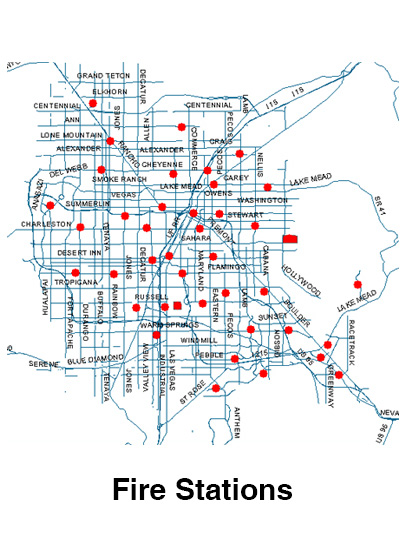
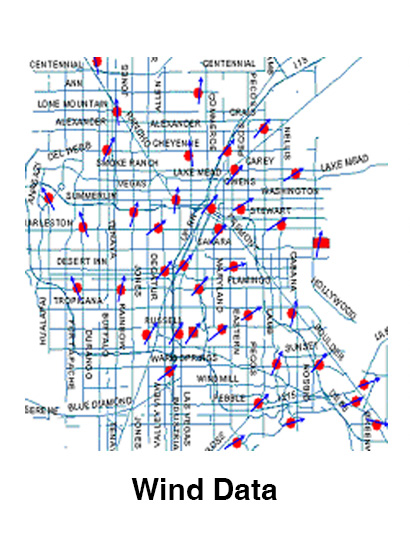
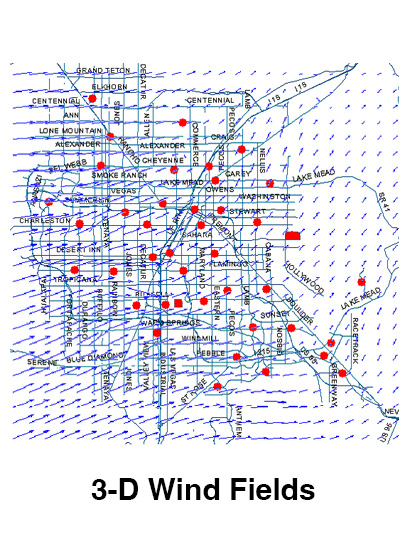
The model can be extended to include more intricate flow patterns around buildings and in street canyons, (illustrated below) to show velocity vectors (indicating flow magnitude and direction) and particulate dispersion patterns around an array of buildings at 2 m above the ground. Recirculation zones and eddies are created downstream of the buildings and within the street canyon. The figure on the right depicts flow streams and wake effects around two objects displayed on an iPhone. The particles, which represent concentration with specific densities, are dispersed not only around the buildings but also caught within their wakes. By coupling real-time meteorological data with 3-D modeling, a three-dimensional picture of the winds flowing over (and through) the city can be quickly established.
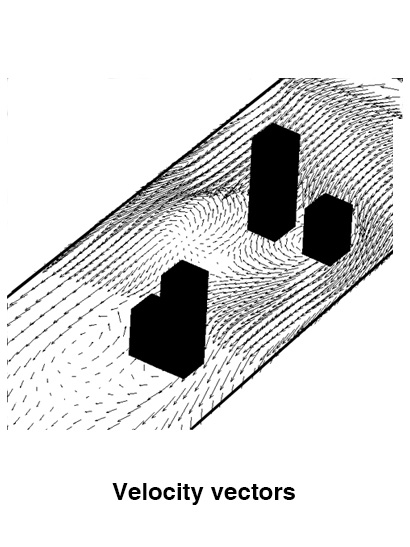
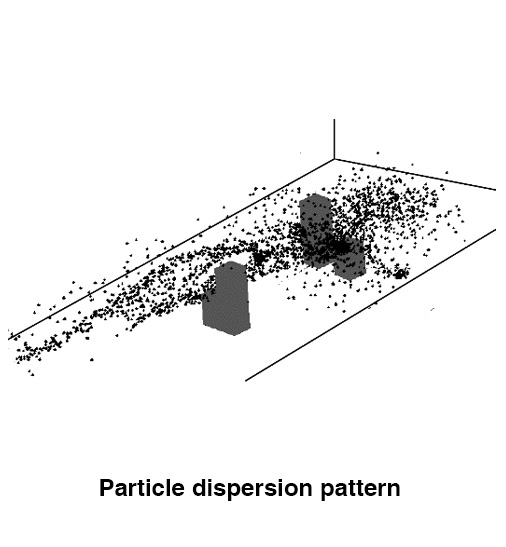
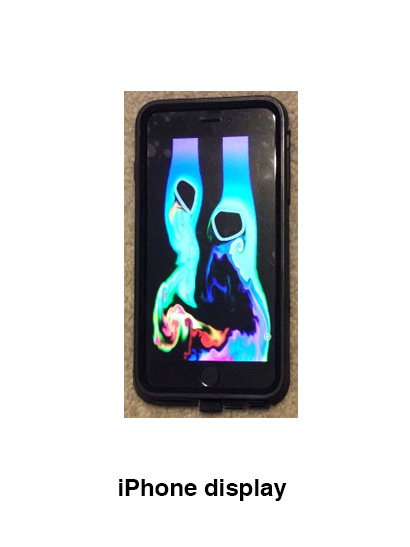
Meshless methods are uniquely simple, yet provide solution accuracies for certain classes of equations that rival those of finite elements and boundary elements without requiring the need for mesh connectivity. Mesh-free methods have the following advantages: (1) they require neither domain nor boundary discretization; (2) domain integration is not required; (3) they converge exponentially for smooth boundary shapes and boundary data; (4) they are attractive to use for high dimensional problems; and (5) they are easy to program. The method is particularly appealing for evaluating contaminant transport as well as risk assessment issues.
Utilizing a connection to the internet, first responders can make use of their mobile devices, such as phones, tablets, and laptops, to access real-time models of the 3-D wind fields.
The intent of this research is to provide a numerical method for rapidly displaying 3-D wind fields utilizing sparse meteorological data - a luxury first responders do not have when faced with an emergency situation. The wind field model will enable fire stations and firemen carrying their mobile devices to display meteorological data updated in real-time. First responders can work together on an emergency, sharing local predictions that may impact other jurisdictions, which can also access the same models.

 Wessex Institute
Wessex Institute